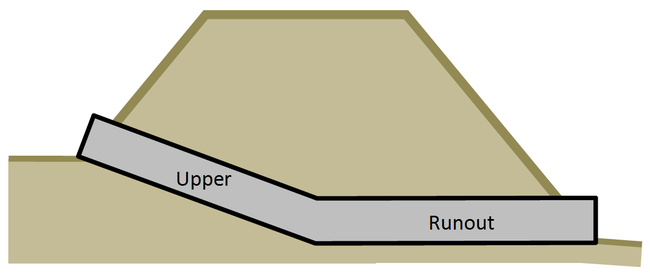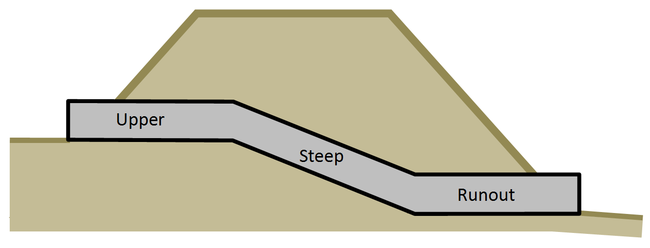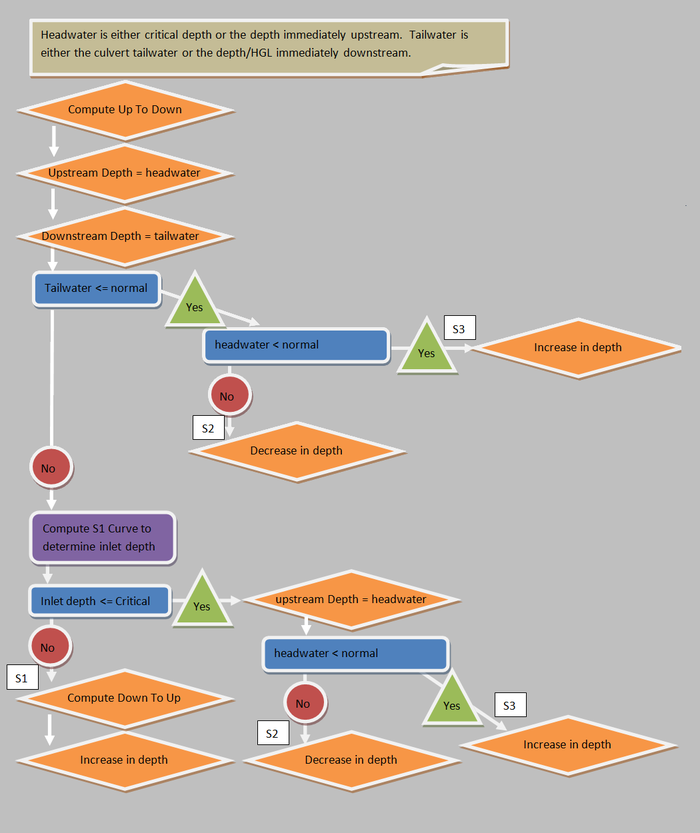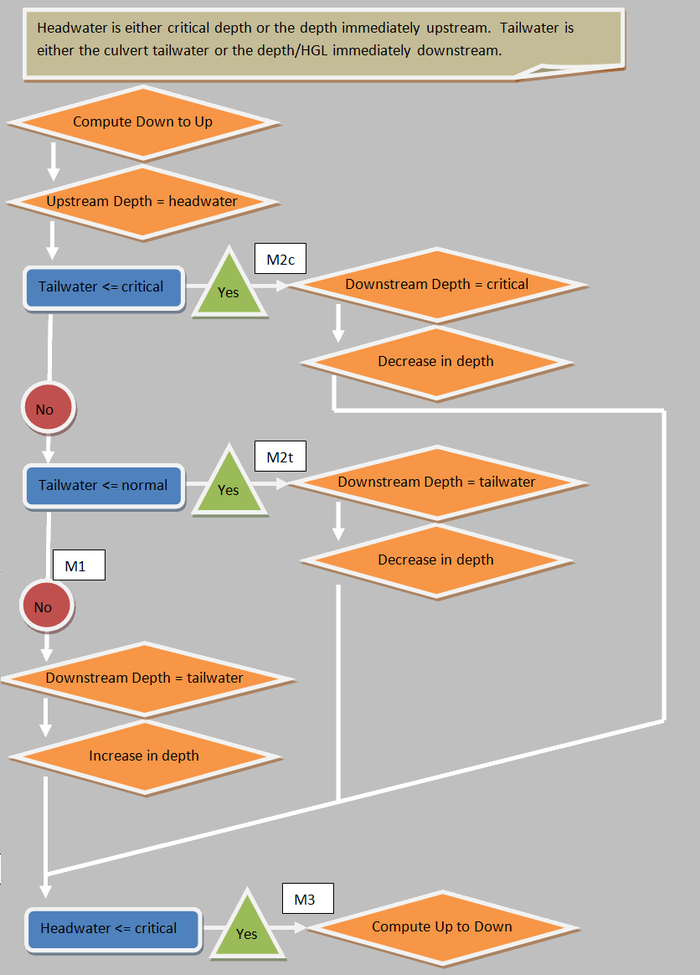HY8:Broken Back Culverts: Difference between revisions
m (moved WMS:HY-8 Broken Back Culverts to HY-8:Broken Back Culverts) |
No edit summary |
||
| Line 205: | Line 205: | ||
When analyzing broken back culverts in HY-8, the normal and critical depth in the '''[[WMS:HY-8 Culvert Summary|Culvert Summary Table]]''' is not shown because it can vary by section. The flow type reported is the flow type of the upper section. | When analyzing broken back culverts in HY-8, the normal and critical depth in the '''[[WMS:HY-8 Culvert Summary|Culvert Summary Table]]''' is not shown because it can vary by section. The flow type reported is the flow type of the upper section. | ||
The option to display the '''[[ | The option to display the '''[[HY-8:Tapered Inlet|Tapered inlet table]]''' is not available and instead there is a '''Broken-Back Section''' option. After selecting this option, select '''Upper''' or '''Runout''' if it is a single broken-back culvert or select '''Upper''', '''Steep''', or '''Runout'''. This option displays a table that is similar to the '''[[HY-8:Culvert Summary|Culvert Summary Table]]''', displaying the flow type, normal depth, and critical depth of the selected culvert section. | ||
{{HY8Main}} | {{HY8Main}} | ||
Revision as of 19:27, 9 January 2013
Overview of Broken Back Culverts
Broken-back culverts have one or more changes in slope along the length of the culvert. HY-8 supports single and double broken-back culverts, meaning one or two changes in slope. In this manual, the sections for a single broken-back culvert are referred to as ‘Upper’ and ‘Runout’ sections. The sections for a double broken-back culvert are referred to as ‘Upper’, ‘Steep’, and ‘Runout’ sections. Broken-back culverts are used to save on excavation costs or to force a hydraulic jump for energy dissipation and prevent scour in the channel downstream from the culvert.
Broken Back Culvert Computation Approach
To analyze a broken-back culvert, HY-8 computes each section as a single culvert. HY-8 determines the order that each section is calculated based on the slopes of each section. A culvert is steep if the normal depth of flow is less than critical depth and it is mild if normal depth is greater than critical depth.
The following table shows the computational order for single broken-back culverts. Please note that the order is only the initial computation. If necessary, some sections are recomputed with updated boundary conditions. The computation order is shown with the following abbreviations: U = Upper and R = Runout.
| Slope (Steep or Mild) | Check for Hydraulic Jumps | Order | ||
|---|---|---|---|---|
| Upper | Lower | Upper | Lower | |
|
Steep |
Steep |
X |
X |
UR |
|
Steep |
Mild |
X |
X |
UR |
|
Mild |
Steep |
X |
RU | |
|
Mild |
Mild |
RU | ||
The following table shows the computational order for double broken-back culverts. Please note that the order is only the initial computation. If necessary, some sections are recomputed with updated boundary conditions. The computation order is shown with the following abbreviations: U = Upper, S = Steep, and R = Runout.
| Slope (Steep or Mild) | Check for Hydraulic Jumps | Order | ||||
|---|---|---|---|---|---|---|
| Upper | Middle | Lower | Upper | Middle | Lower | |
|
Steep |
Steep |
Steep |
X |
X |
X |
USR |
|
Steep |
Steep |
Mild |
X |
X |
X |
USR |
|
Steep |
Mild |
Steep |
X |
X |
X |
RSU |
|
Steep |
Mild |
Mild |
X |
X |
X |
URS |
|
Mild |
Steep |
Steep |
X |
X |
SRU | |
|
Mild |
Steep |
Mild |
X |
X |
SRU | |
|
Mild |
Mild |
Steep |
X |
RSU | ||
|
Mild |
Mild |
Mild |
RSU | |||
To determine the water surface profile of each section, HY-8 determines starting conditions for each section of a broken back culvert so the direct step method can be computed. The starting conditions HY-8 determines include the water depth at the beginning and end of each section, the computation direction for each section, and whether the water surface increases or decreases in depth in the downstream direction for each section. The starting conditions for steep broken-back culvert sections are initialized based on the flowchart below.
The starting conditions for mild broken-back culvert sections are initialized based on the flowchart below.
Once HY-8 computes a profile for one section, it updates the water surface profile depth for the section(s) that it is next to. HY-8 pieces the profiles for each section together to create a seamless water surface profile through the broken-back culvert.
Broken Back Culvert Results
When analyzing broken back culverts in HY-8, the normal and critical depth in the Culvert Summary Table is not shown because it can vary by section. The flow type reported is the flow type of the upper section.
The option to display the Tapered inlet table is not available and instead there is a Broken-Back Section option. After selecting this option, select Upper or Runout if it is a single broken-back culvert or select Upper, Steep, or Runout. This option displays a table that is similar to the Culvert Summary Table, displaying the flow type, normal depth, and critical depth of the selected culvert section.



